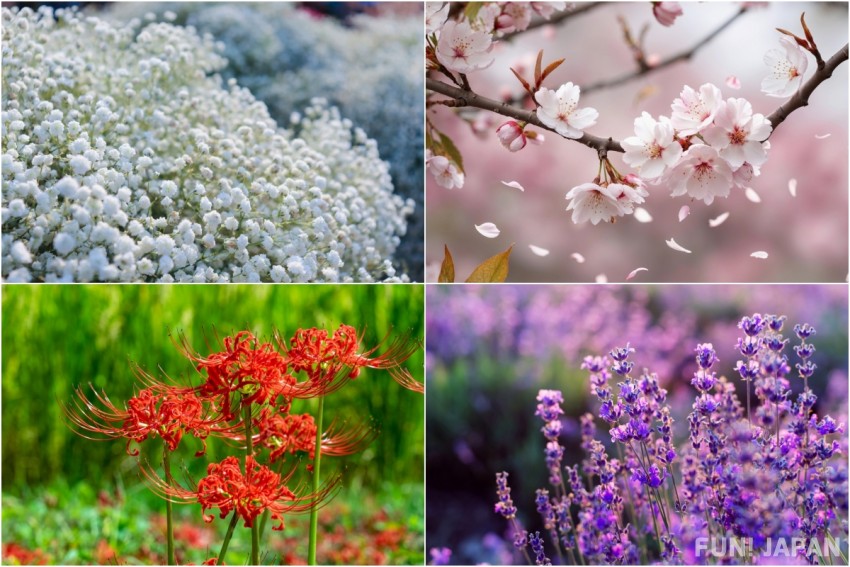
Flowers often play an important role in Japanese dramas and films, helping to express the emotions of a story. Sometimes, they even become social media trends or cultural phenomena. In this article, we'll introduce flowers featured in works like "silent," "First Love," "We Made a Beautiful Bouquet," and "My Favorite Flower," along with their flower language and places where you can see them in full bloom. The connection between the storylines and flower language can deepen your appreciation of the films and dramas.
*By purchasing or reserving products introduced in this article, a portion of the sales may be returned to FUN! JAPAN.
What is the Flower Language of Baby’s Breath?
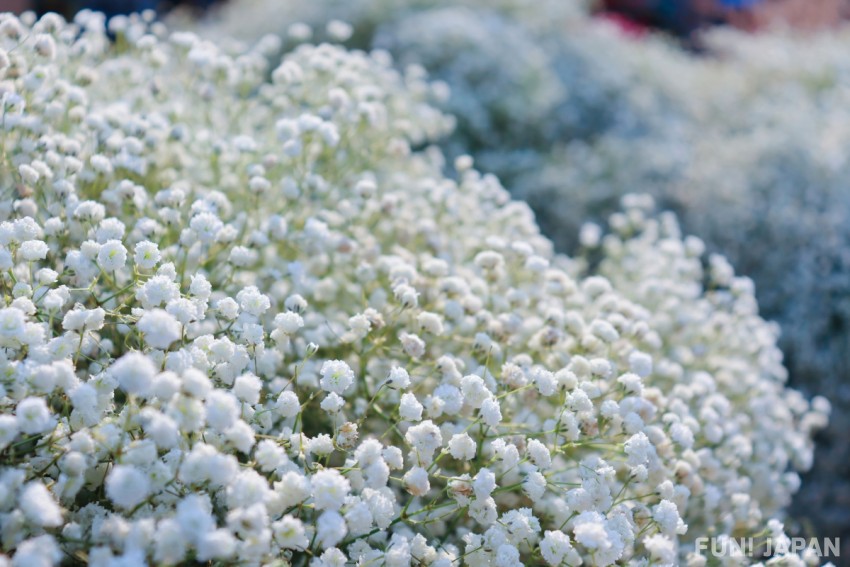
Baby’s breath belongs to the Caryophyllaceae family and blooms between May and August. Most commonly seen in white, this flower comes in various types, including annuals and perennials.
Flower Language
Baby’s breath represents "happiness," "gratitude," "innocence," "pure heart," and "kindness." Pink baby’s breath has different meanings, such as "heartfelt wishes" and "deep emotions."
Baby’s Breath in Japanese Dramas and Films
Baby’s breath has appeared in several Japanese dramas and films, including "Don’t Forget Me" (2018), "Beloved" (2021), and "silent" (2022). In particular, the final episode of "silent" features a moving scene where the characters share baby’s breath with each other, reflecting the flower language of "gratitude" and "happiness."
📚 Read the script for the drama "Silent"
Famous Baby’s Breath Viewing Spots
Showa Village in Fukushima Prefecture boasts the largest summer-to-autumn baby’s breath cultivation area in Japan. From early summer to late autumn, visitors can admire fields of baby’s breath that resemble a sky full of twinkling stars.
What is the Flower Language of Sunflowers?
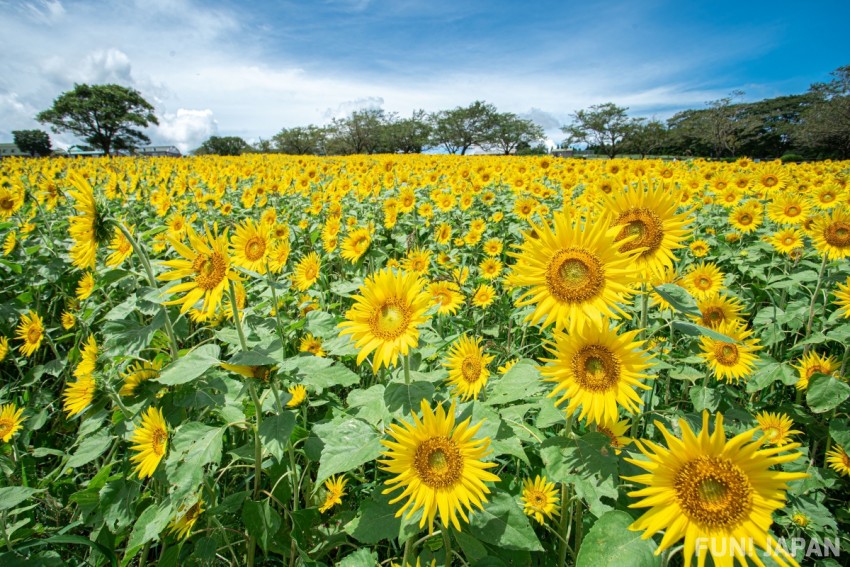
Sunflowers belong to the Asteraceae family and bloom between July and September. While yellow is the most common color, sunflowers also come in orange, red, and white varieties.
Flower Language
Sunflowers symbolize "admiration," "passion," and "only looking at you." Yellow sunflowers, the most common type, represent "energy," "brightness," and "hope," while orange ones convey "vitality" and "energy." However, red and brown sunflowers can symbolize "grief," so it's important to be mindful of their meanings. The number of sunflowers also carries significance: one sunflower means "love at first sight," three symbolize "a confession of love," and 99 represent "eternal love."
Sunflowers in Japanese Dramas and Films
Sunflowers played a significant role in the love story "Be With You," which was adapted into a film in 2004 and a drama in 2005. In the story, sunflowers serve as a symbol of the protagonists’ unwavering love.
Famous Sunflowers Viewing Spots
HThe "Hokuryu Sunflower Village" in Hokkaido is home to one of Japan’s largest sunflower fields, with approximately two million sunflowers in bloom. The area features a maze and an observation deck, making it a popular destination for couples and families.
What is the Flower Language of Cherry Blossoms?
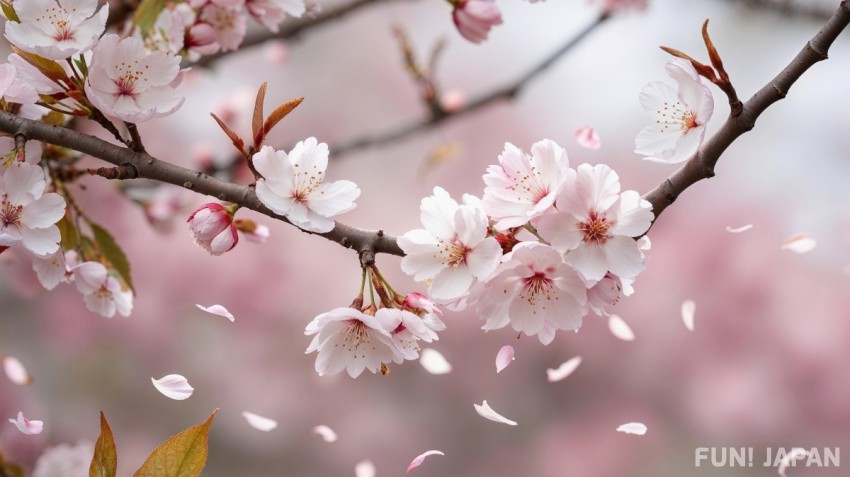
Cherry blossoms belong to the Rosaceae family, subgenus Cerasus, and are deciduous trees. Most varieties bloom between March and April. The flowers are usually pale or deep pink, though some varieties may have white blossoms.
Flower Language
The flower language of cherry blossoms includes "spiritual beauty," "graceful woman," and "purity," often reflecting their delicate beauty and short blooming period. The meaning can also change depending on the color—pink cherry blossoms symbolize "exceptional beauty" and "the beginning of love," while white cherry blossoms represent "a pure heart" and "innocence."
Cherry Blossoms in Japanese Dramas and Films
Cherry blossoms appear in many works, including Netflix’s original drama "First Love" (2022), the animated film adaptation of the novel "I Want to Eat Your Pancreas" (2017), and "Crying Out Love in the Center of the World," which was adapted into both a film and a drama. In "First Love," the scene where the protagonists walk along a cherry blossom-lined path became a highlight, attracting many visitors to the filming locations.
💿 Watch the anime "I want to eat your pancreas"
Famous Cherry Blossoms Viewing Spots
Three famous cherry trees in Japan—Miharu Takizakura in Fukushima Prefecture, Yamataka Jindai Zakura in Yamanashi Prefecture, and Neodani Usuzumi Zakura in Gifu Prefecture—are designated as national natural monuments. These trees are collectively known as "Japan’s Three Great Cherry Trees" and are estimated to be over 1,000 years old.
What is the Flower Language of Roses?
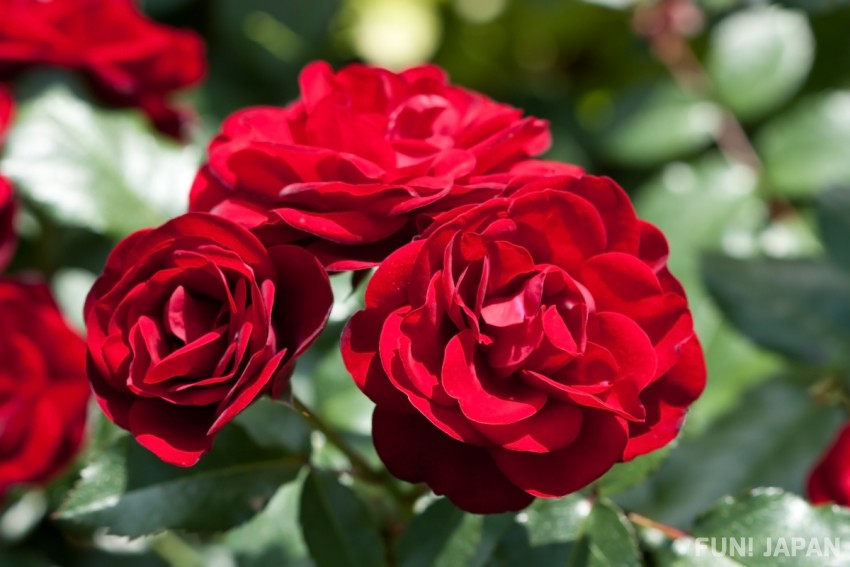
Roses belong to the Rosaceae family and typically bloom between May and June. They come in a variety of colors, including red, white, pink, yellow, and orange. Due to their beauty, roses are often called the "Queen of Flowers."
Flower Language
The meaning of roses changes depending on their color—red represents "passion," "love," and "beauty"; white symbolizes "purity" and "deep respect"; pink conveys "elegance," "grace," and "gratitude." The number of roses also carries different meanings: a single rose means "love at first sight," three roses signify "I love you," and 108 roses are used to propose with the message "Will you marry me?"
Roses in Japanese Dramas and Films
Roses played a significant role in the love story drama "The Flower Shop Without Roses" (2008), serving as an important motif throughout the story.
Famous Rose Viewing Spots
In Japan, famous rose gardens include "Higashizawa Rose Park" (Yamagata Prefecture), which spans approximately 7 hectares and features 20,000 rose bushes of 750 varieties; "Keisei Rose Garden" (Chiba Prefecture), home to over 10,000 rose bushes of 1,600 varieties; and "Ibaraki Flower Park" (Ibaraki Prefecture), which showcases roses with different seasonal expressions.
What is the Flower Language of Lavender?
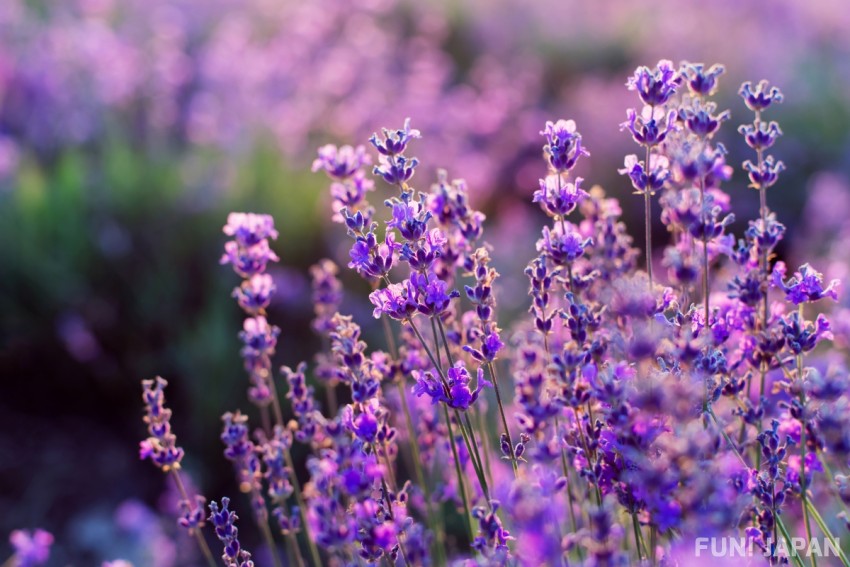
Lavender belongs to the Lamiaceae family and typically blooms between June and August. While purple is the most common color, lavender can also be found in pink, blue, and white.
Flower Language
Lavender symbolizes "I’m waiting for you," "silence," "expectation," "suspicion," and "gracefulness." The term "silence" here does not carry a negative connotation but rather represents the calm and soothing nature of lavender.
in Japanese Dramas and Films
In the Japanese drama "From the North Country" (1981), the lavender fields of "Farm Tomita" in Furano, Hokkaido, are featured. Today, this location has become a popular pilgrimage spot for fans of the series.
💿 Watch the drama "From the North Country 2002 Final Words"
Famous Lavender Viewing Spots
Popular lavender fields include "Farm Tomita" (Hokkaido), which was a filming location for "From the North Country"; "Tambara Lavender Park" (Gunma Prefecture), home to around 50,000 lavender plants; and "Oishi Park" (Yamanashi Prefecture), where visitors can enjoy stunning views of both lavender fields and Mt. Fuji.
What is the Flower Language of Hydrangeas?
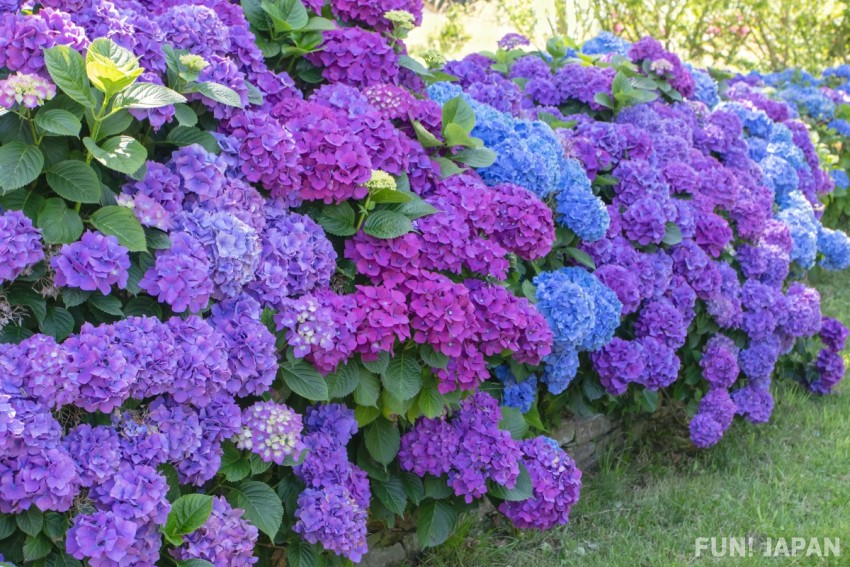
Hydrangeas belong to the Hydrangeaceae family and are deciduous shrubs that reach full bloom between June and July. Common colors include blue, pink, purple, white, blue-purple, and green.
Flower Language
The meaning of hydrangeas varies by color. Blue and blue-purple symbolize "mystery," "intelligence," "coldness," "heartlessness," and "patient love"; white represents "devoted love" and "generosity"; green signifies "single-minded love." Pink hydrangeas carry meanings such as "cheerful woman" and "strong love," making them a popular gift for Mother’s Day.
Hydrangeas in Japanese Dramas and Films
Hydrangeas appear in several works, including "An Incurable Case of Love" (2020), "Ossan’s Love" (2018), "Your Turn to Kill" (2019), and "Don’t Call It Mystery" (2022). In "An Incurable Case of Love" (2020), the hydrangeas at a shrine were particularly memorable, leading to an increase in visitors looking to explore the filming location.
📚 Read the manga "An Incurable Case of Love" (e-book)
Famous Hydrangea Viewing Spots
Popular locations to view hydrangeas include "Usu Zenkoji Temple" (Hokkaido), where approximately 1,000 hydrangea bushes bloom, and "Hasedera Temple" (Kamakura, Kanagawa Prefecture), which is known for its breathtaking scenery often described as a "Pure Land Paradise."
What is the Flower Language of Red Spider Lily (Higanbana) ?
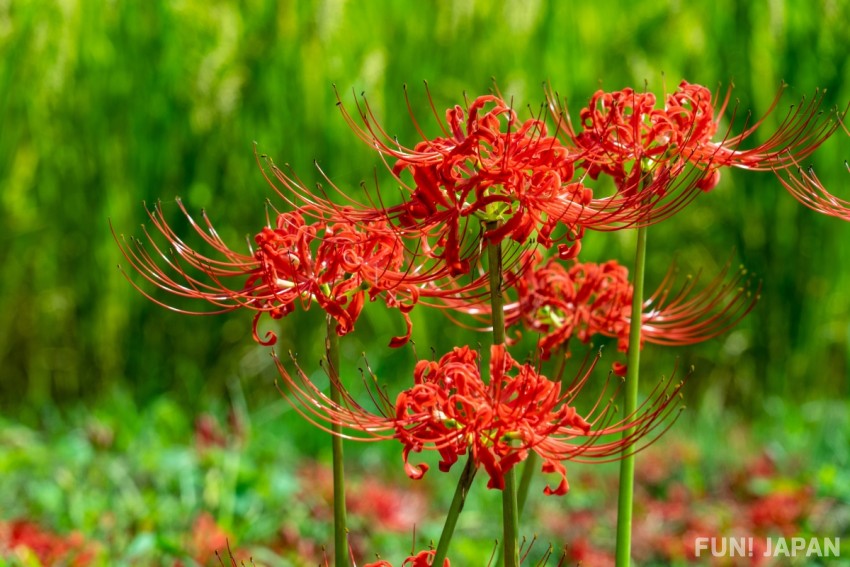
The red spider lily, or Higanbana, is a bulbous plant belonging to the Amaryllidaceae family. It typically blooms around September, though the timing varies depending on the region. It is also known as "Manjushage." The flower comes in various colors, including red, yellow, white, orange, and a bluish-pink hue.
Flower Language
The red spider lily is often associated with bittersweet and ephemeral themes, carrying meanings such as "sad memories," "looking forward to our next meeting," "resignation," and "independence." Yellow spider lilies symbolize "cheerfulness" and "remembrance," while orange ones signify "allure."
Red Spider Lily in Japanese Dramas and Films
Higanbana appears in various dramas and films, including Your Turn to Kill (2019), Love You as the World Ends (2021), and the movie Threads: Our Tapestry of Love (2020). In the anime and manga Demon Slayer: Kimetsu no Yaiba, the "Blue Spider Lily" plays a significant role in the story, though it does not exist in reality and has no known flower meaning.
📚 Read Demon Slayer: Kimetsu no Yaiba
Famous Red Spider Lily Viewing Spots
Some famous spots to view these flowers include Nyoiin Temple (Iwate Prefecture), where they bloom along the approach to the temple; Gongendo Park (Saitama Prefecture), where approximately three million spider lilies cover the embankments; and Yatsukawa River and the Niimi Nankichi Memorial Museum (Aichi Prefecture), the setting of the folktale Gon, the Little Fox.
What is the Flower Language of Lily?
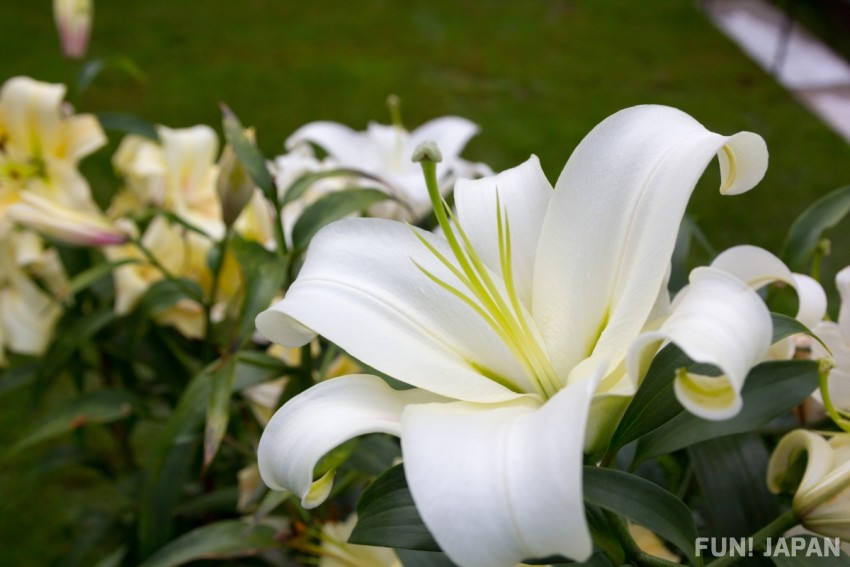
Lilies belong to the Liliaceae family and bloom from late May to early June. They come in various colors, including large white flowers with yellow streaks and red speckles, delicate pink flowers, and highly fragrant, grand blossoms.
Flower Language
Lily flowers represent "purity," "innocence," and "dignity." Their meanings vary by color: white signifies "purity" and "nobility," yellow symbolizes "cheerfulness," "deception," and "anxiety," pink conveys "elegance," "vanity," and "wealth and prosperity," while orange represents "brilliance" and "delight."
Lilies in Japanese Dramas and Films
Lilies appear in Ossan’s Love (2018), If Only That Flower Could Bloom on the Hill Where We Met Again (2023), and 366 Days (2025). The 2023 movie features a scene of a hill covered in blooming lilies, symbolizing the protagonists' relationship.
📚 Read "I Wish I Could Meet You Again on the Hill Where That Flower Blooms" (e-book)
Famous Lilies Viewing Spots
Notable locations include Yurigahara Park (Hokkaido), a vast 25.4-hectare garden; Fukaya Green Park (Saitama Prefecture), which spans approximately 5.4 hectares; and Fujimi Kogen Flower Village (Nagano Prefecture), located at an altitude of 1,250 meters.
What is the Flower Language of Forget-Me-Not?
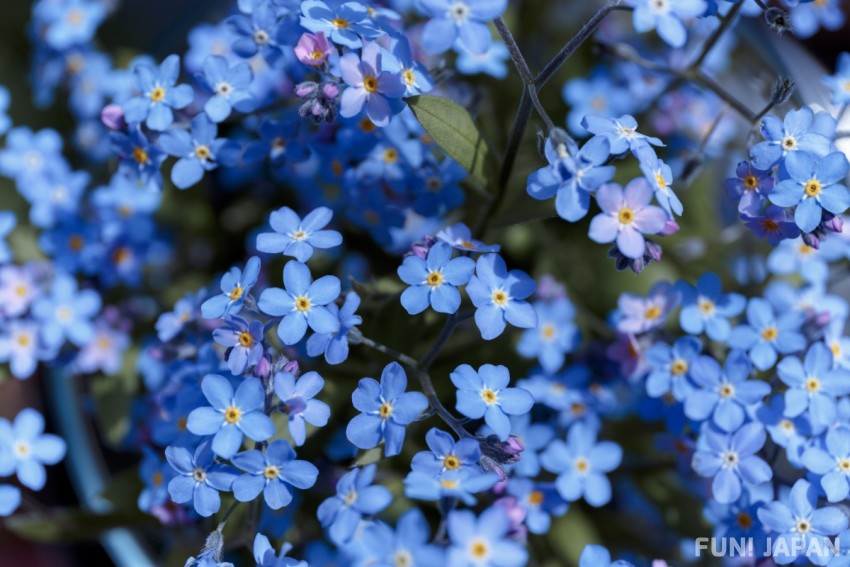
Forget-me-nots belong to the Boraginaceae family and bloom from late March to early June. While the most common variety is blue, there are also pink and white types.
Flower Language
Forget-me-nots carry the heartfelt meanings of "Do not forget me" and "True love." They symbolize cherishing precious memories and deep affection.
Forget-Me-Not in Japanese Dramas and Films
Although forget-me-nots do not appear directly in the movie We Made a Beautiful Bouquet (2021), the theme song Wasurena by Awesome City Club draws inspiration from both the film’s narrative and the flower's symbolism, aligning with the story’s themes of unforgettable love.
💿 Listen to "Wasurena" by Awesome City Club
What is the Flower Language of Gerbera?
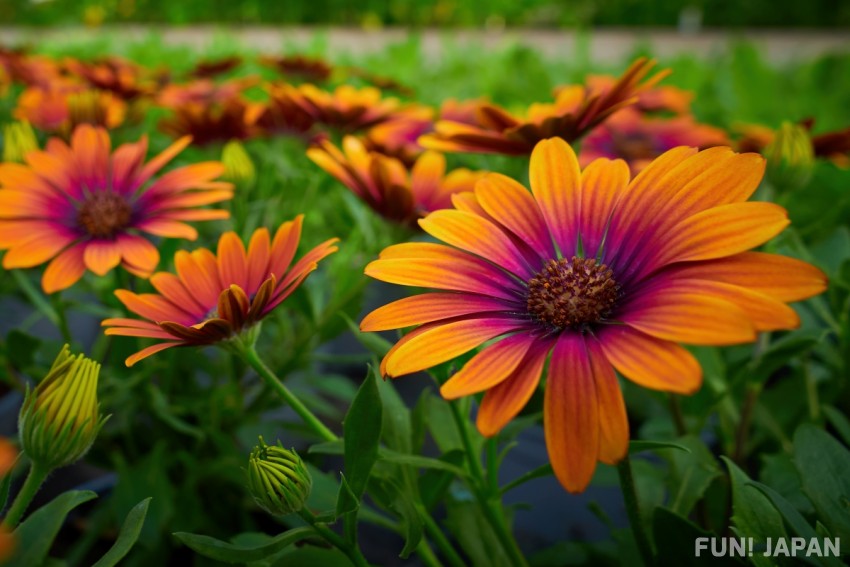
Gerberas belong to the Asteraceae family and bloom twice a year, from April to June and October to November. They are available in a wide range of colors, including red, pink, orange, yellow, and white.
Flower Language
Gerberas generally symbolize "hope" and "positivity." The meanings also vary by color: red represents "burning mystical love" and "passion," pink signifies "sublime love," "gratitude," and "thoughtfulness," orange stands for "adventure," yellow conveys "friendliness" and "kindness," and white represents "purity" and "hope."
Gerberas in Japanese Dramas and Films
Gerberas are featured in the drama My Favorite Flower (2023) and Netflix’s The Story of a Boy with One Year to Live Who Met a Girl with Six Months to Live (2024).
Japanese dramas and movies often incorporate flowers as symbolic elements tied to the characters' relationships and emotions. For example, in 1122: A Good Couple, gardenias appear, representing "I am very happy." When watching these productions, paying attention to the flowers that appear on screen and their meanings can deepen your appreciation of the story and its themes.
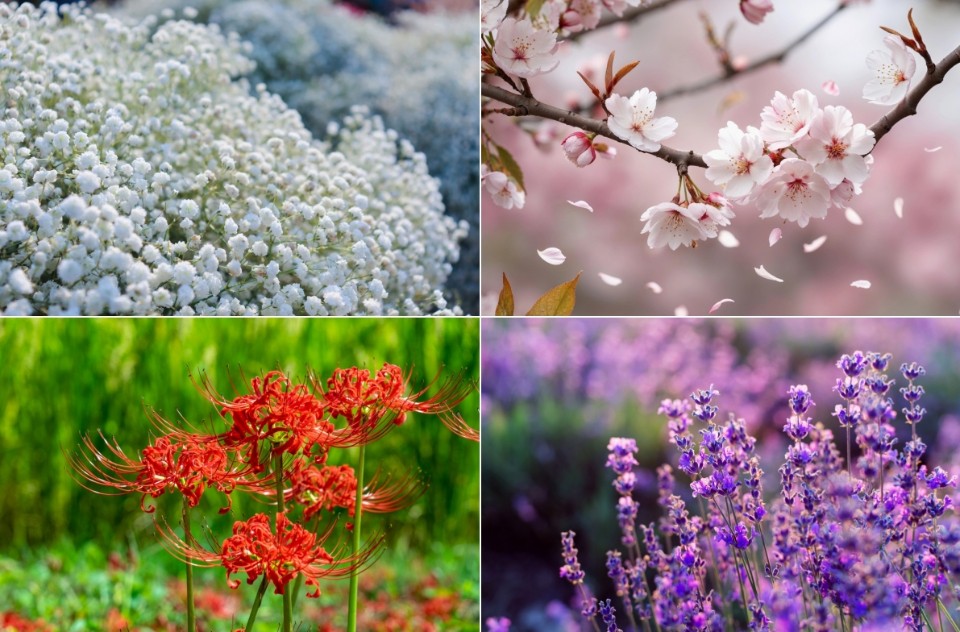
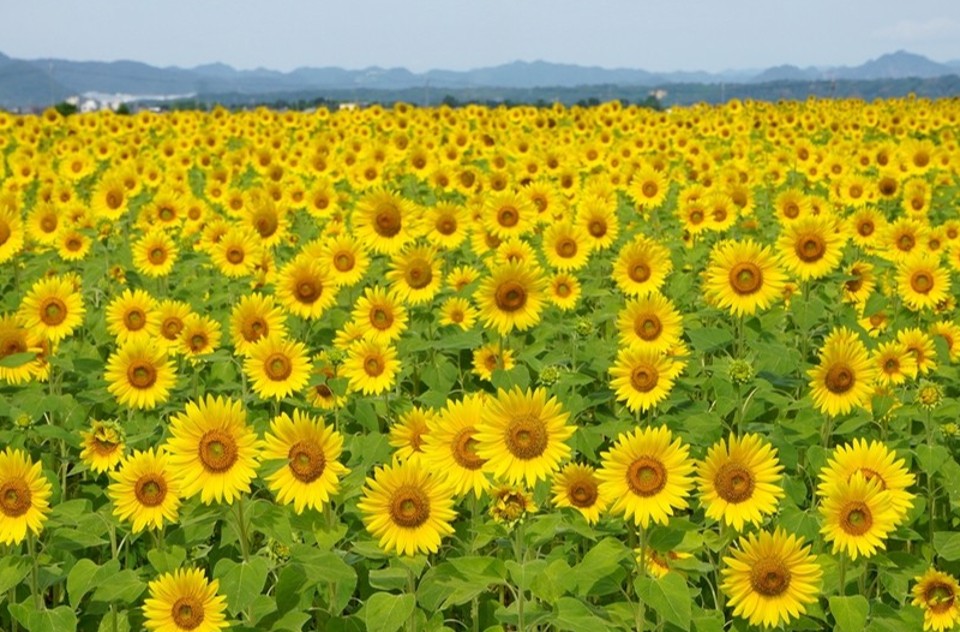

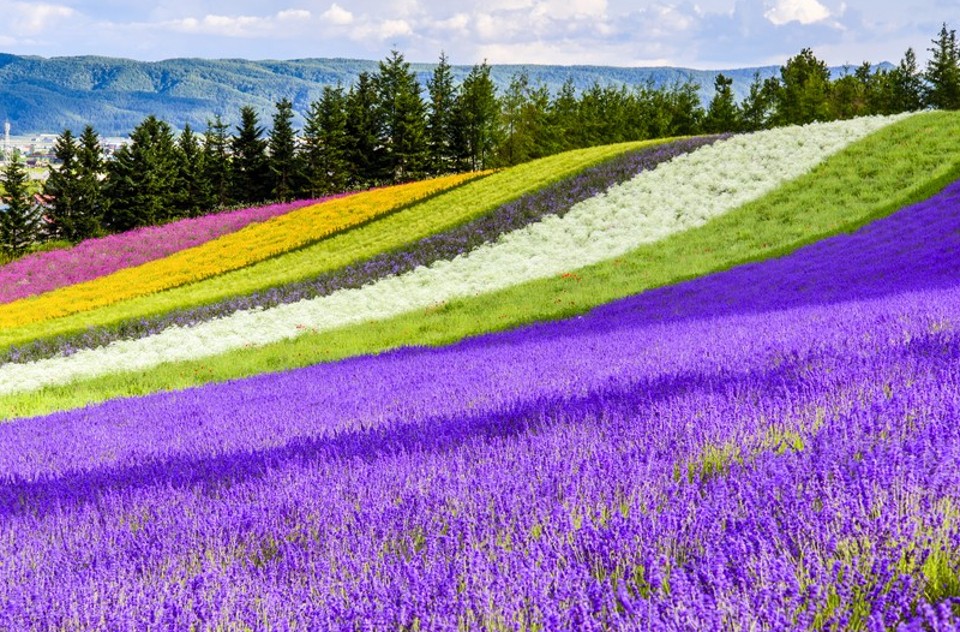
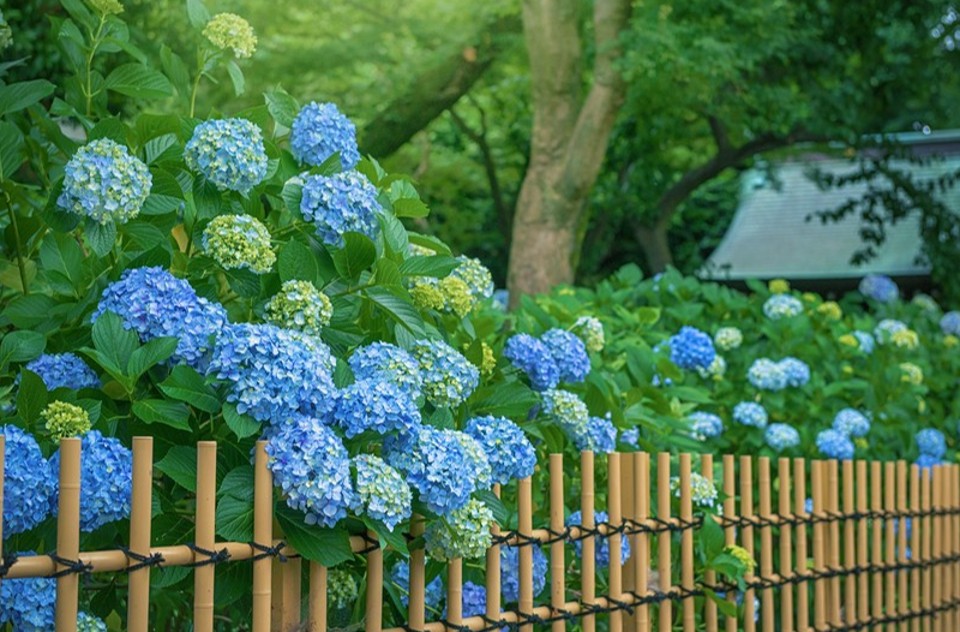
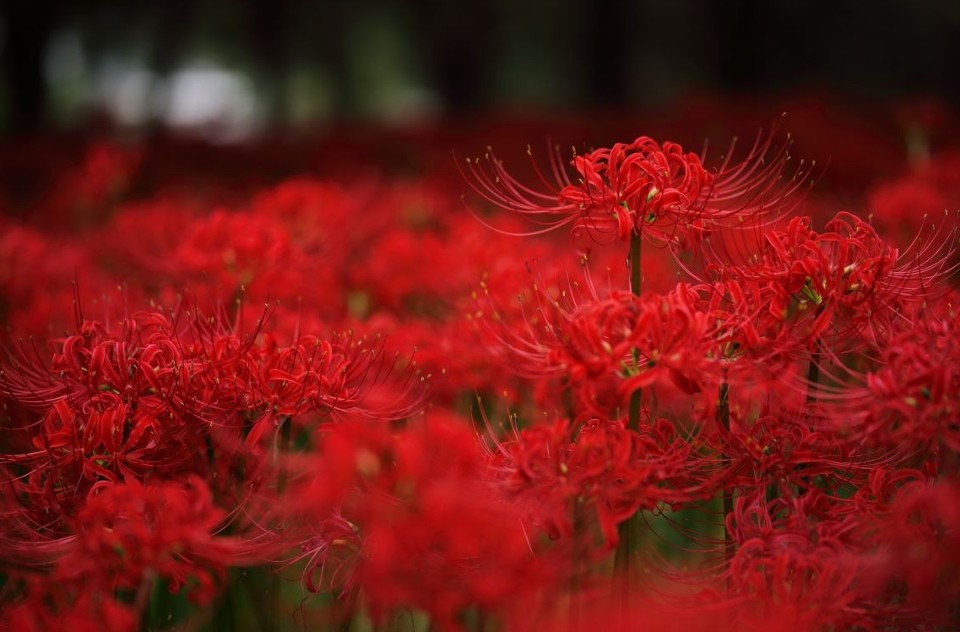
Comments